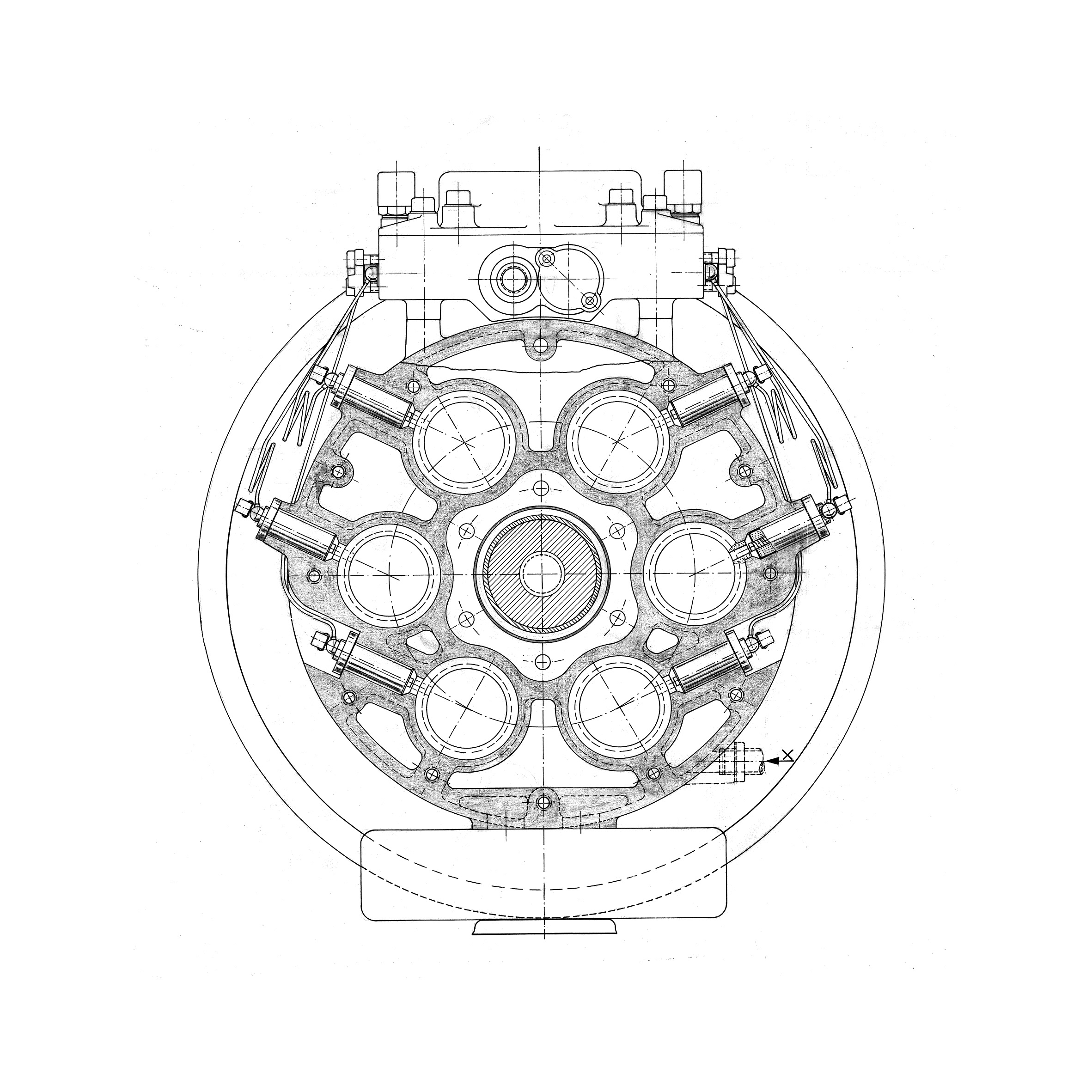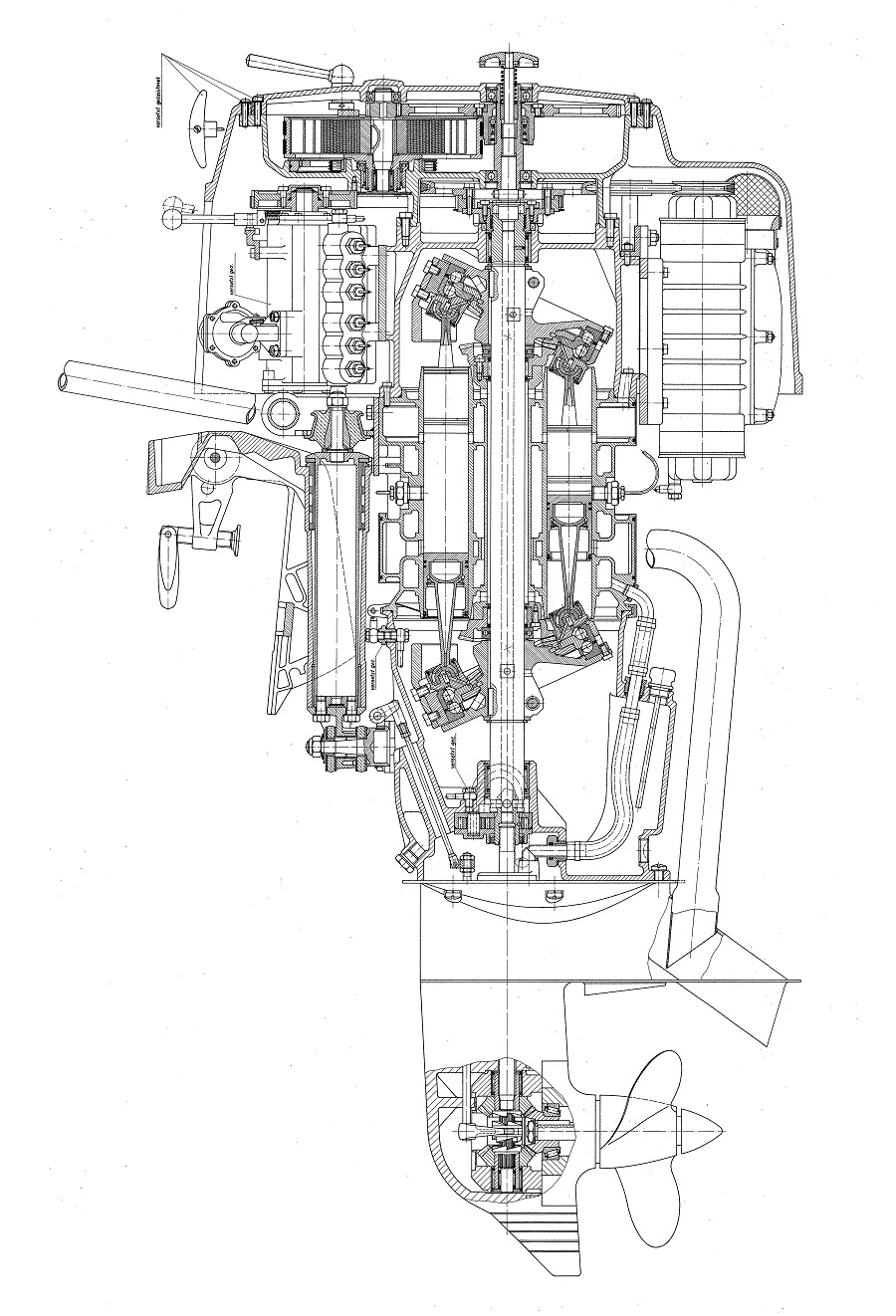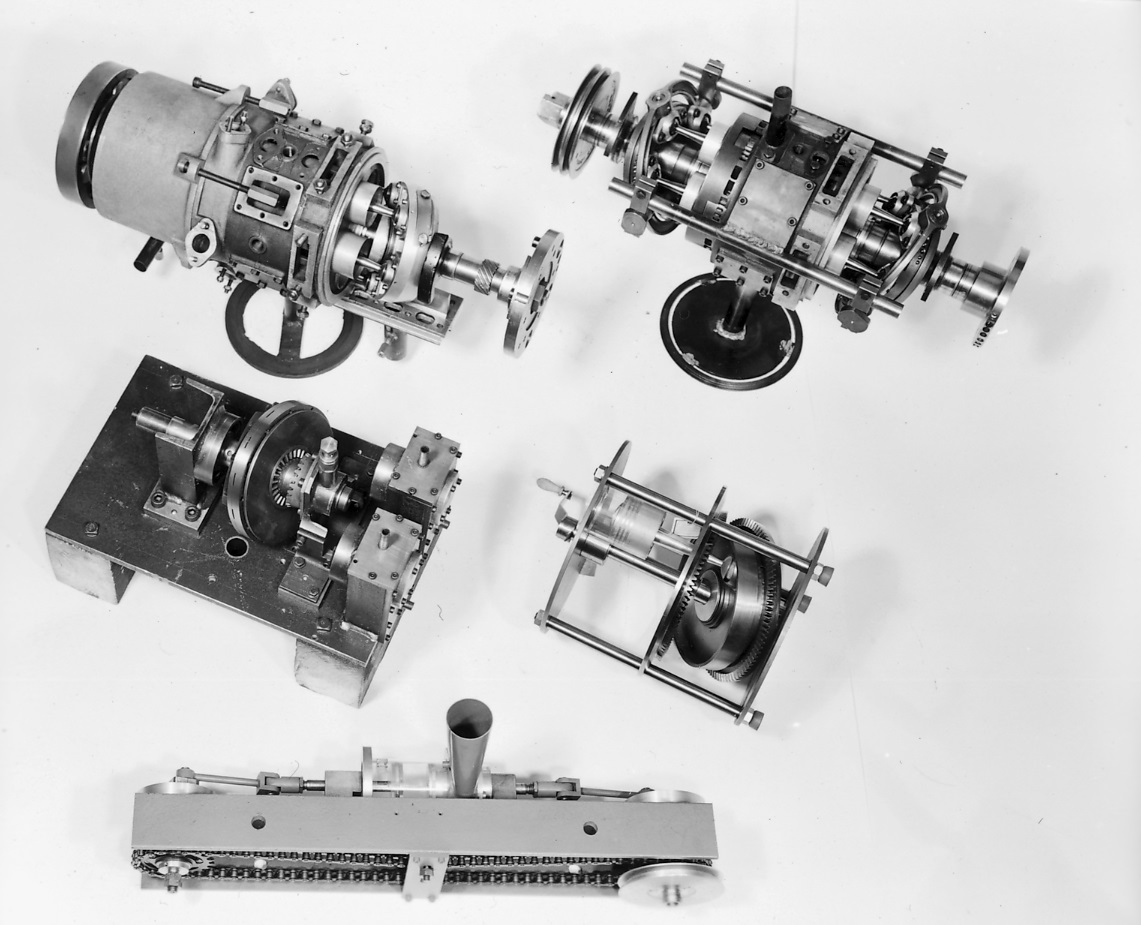Wobbling Disk Engine
–
Hermann Papst has his idea for the Wobbling Disk Engine in the middle of the war, when he sees a group of US bomber planes flying over Sankt Georgen. A slim fighter plane is needed, small enough to hardly offer any hit zone. Within a few days Hermann Papst designs a much more compact two-stroke counter piston engine with a slim cylindrical basic form, as compared to the crankshaft motor, featuring two wobbling disks (inclined plates) on a common shaft. He takes his designs to the German Aviation Department in Berlin to receive support for the development of that particular engine. But because it would take too long to fully develop an entirely new engine, which therefore was deemed not dispositive to the war, his request is denied.
Visitors who work in the automobile industry are enthusiastic about the Wobbling Disk Engine. However everything about the concept is new, the existing production-structures in the automobile-factories could not be used and the moderate success of Felix Wankel’s rotary piston engine makes potential buyers feel insecure about it. For financial reasons the development is discontinued in 1982.
The Two-stroke counter piston wobbling disk engine
–
–
Piston and Connecting Rod of the Wobbling Disk Engine
20 years before anyone in the world of automobiles had even heard of ceramic pistons, Hermann Papst had already developed and tested them with a cast-fit in silica bottom. Thereby a combustion chamber with a rather small, heat conducting surface is provided. The respective engine has a high thermal tightness and is suited to be used as a multi fuel engine in connection with a high pressure injection pump. One of the engine’s advantages is the low consumption, and surprisingly good exhaust emissions for a two’ stroke engine.
Piston with silica bottom and a Connection Rod of the engine, actuating the wobbling disk
–
From 1956 on Hermann Papst starts testing the Wobbling Disk Engine with his research team. First with a cardanic bearing, then with linear sliding guidance and finally, in the third engine generation, with a miter wheel bearing.
Cinematics of the Wobbling Disk Engine- third generation
–
During this time Hans L. Merkle, one of Bosch’s chairmen, visits St. Georgen.
He believes that it is impossible Hermann Papst’s project achieves 1000 atm injection pressure for a diesel engine within a short period of time. But only two years after his visit this result is achieved. It takes Bosch two decades to bring comparably high pressure fuel injection systems on the market.
Cross section of the Wobbling Disk Engine’s six cylinders
–
From 1967 on Hermann Papst dedicates most of his time to research. His son Georg summarizes the main aspects of the Wobbling Disk Engine in an unpublished script: “Trials with a one-cylindrical counter piston simulator has been tested as well as four-cylindrical counter Piston Wobbling Disk Engine five-cylindricalboxer and counter piston engine, finally a six-cylindrical counter piston two stroke engine. Right from the beginning the goal was to create a low- emission and fuel efficient engine. As a multi fuel engine many development steps on the fuel injection as well as the ignition were required for the Wobbling Disk Engine.
Apart from a whole lot of nozzles with diverse cross sections and shapes, injection ignition nozzles and glow ignition nozzles have been developed. They were supposed to ignite the fuel very early to inject basically a flame jet into the cylinder. Major progress could be achieved on the engine, especially the connection rod, consisting of a conically shaped rod with two different halt spheres, which were fit together through an impulse welding process.”
Papst- Wobbling Disk Engine PATAMO
as an outboard Engine for diesel fuel
–
Longitudinal cut through the PATAMO
–
The Wobbling Disk Engine has not had its breakthrough yet, but there are still years to come in the history of the development of modern combustion engines. The economic and ecologic advantages of the engine could eventually draw attention to it once again.
Upper row: Wobbling Disk Engine of the first and second generation;
Lower Row: Simulator and Cinematics – Model





